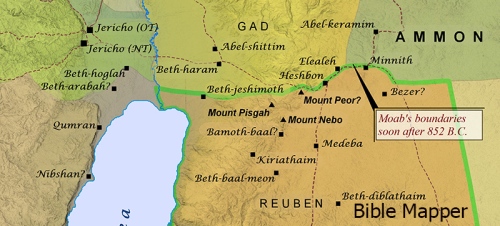The past few days I have been looking through my photos of Mount Nebo in Jordan. My first visit to the site was in 1967 when the Old City of Jerusalem was in Jordan. Our group got up early on Tuesday May 2 and packed into some of the larger American cars for the ride to Mount Nebo and other sites in the area. For my first two tours the tour operator used cars to transport the group from place to place. We had 19 tour members on that first tour. The tour operator used Mercedes autos on the second tour. When we arrived at the site the tour members would gather to listen to the guide make his presentation.
I recall the guides for the early tours making comments about the view from Mount Nebo when they were younger. Several said they used to be able to see Mount Hermon from the site, before there was so much haze from pollution. I can recall a time or two that we might have had a fairly decent glimpse of Jericho.
Most times we could see only the wilderness of Judea on the west side of the Dead Sea. We might see a little bit of the northern end of the Dead Sea.
Because of the sin of Moses in failing to give credit to God for the water he provide in the wilderness Moses was not permitted to enter the promised land (Numbers 20:1-13).
Mount Nebo is the place from which Moses viewed the land that the LORD had promised to Abraham’s seed (Deuteronomy 34:1-8).
He could see the land but he was not permitting to lead the people across the Jordan into the land. This responsibility would fall to his successor Joshua.

The building on Mount Nebo is a reconstructed Byzantine church built at the site to commemorate the event of Moses viewing the promised land before his death and burial in the vicinity.
The next photo show the typical view we have today when we look to the west from Mount Nebo.
Here is a map showing Mount Nebo in the time of Moses.







You must be logged in to post a comment.